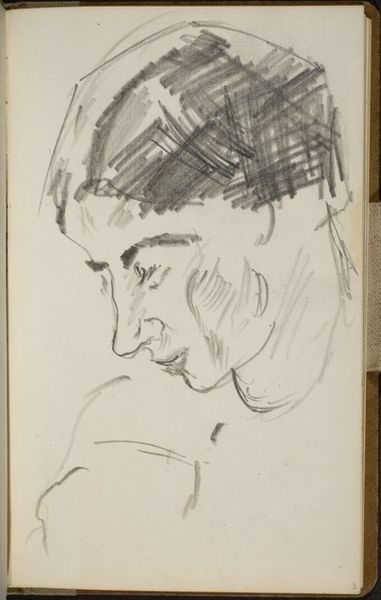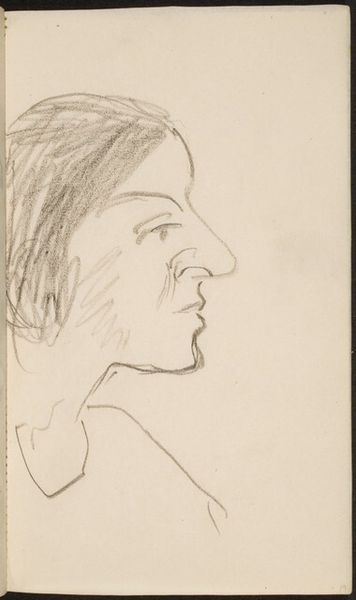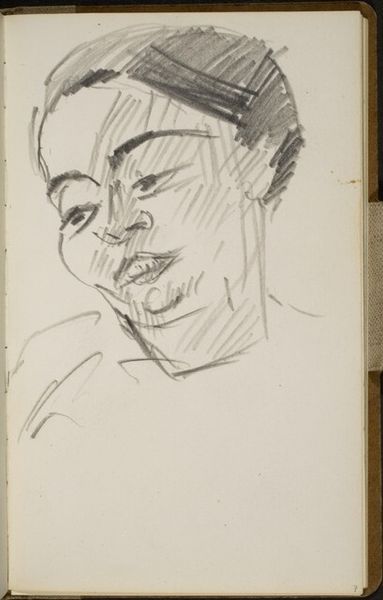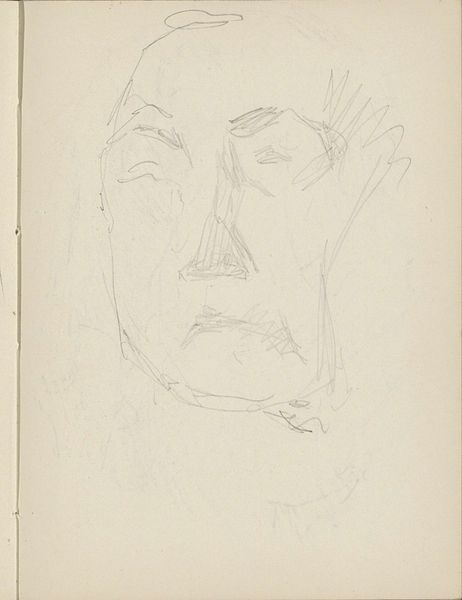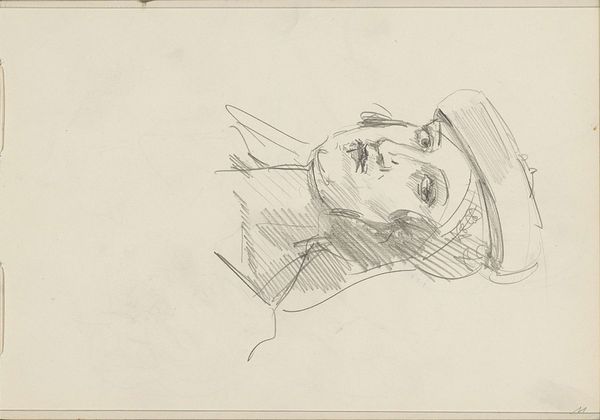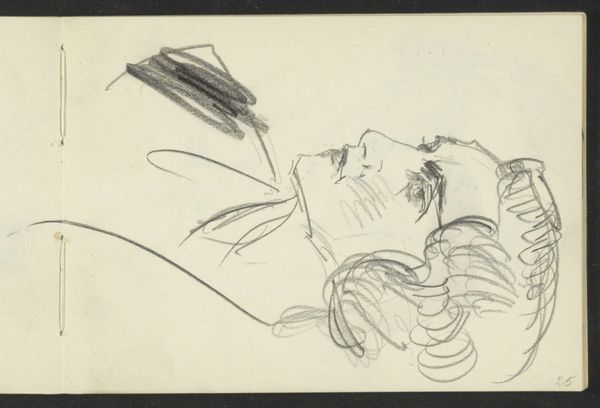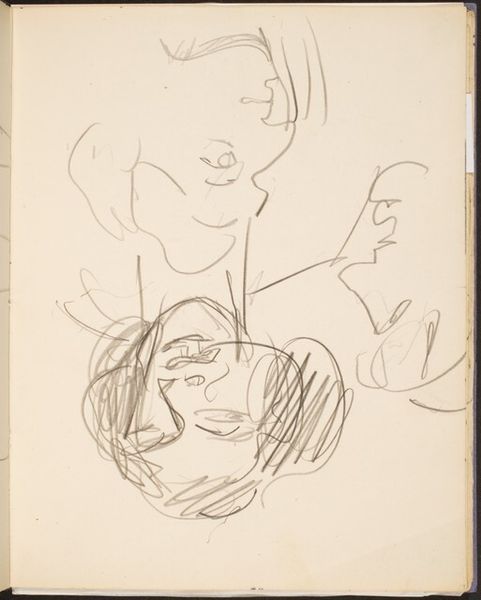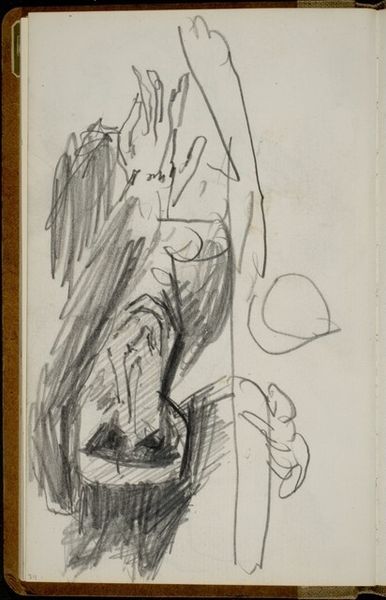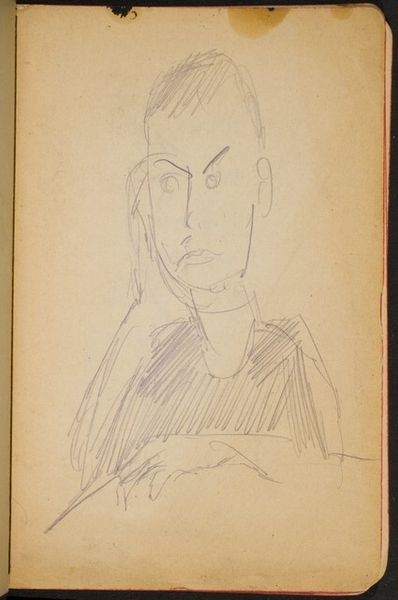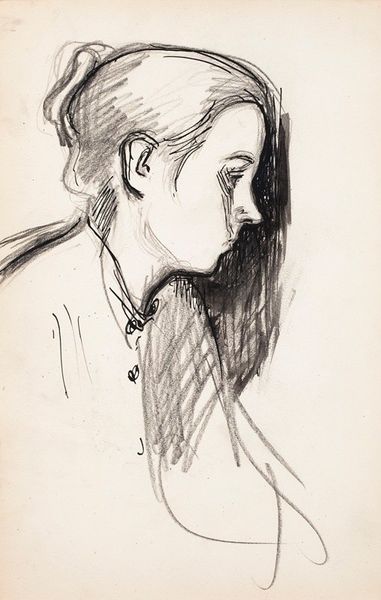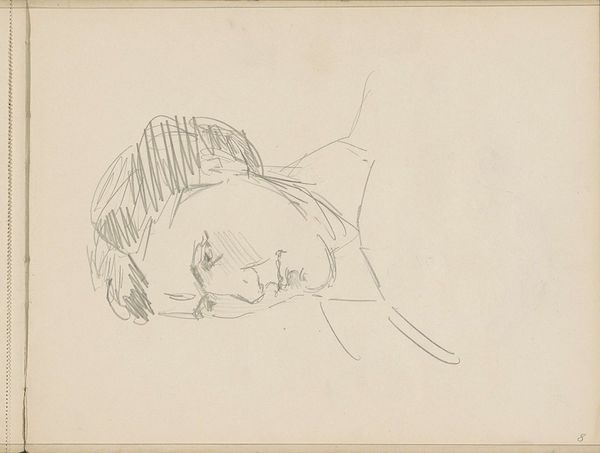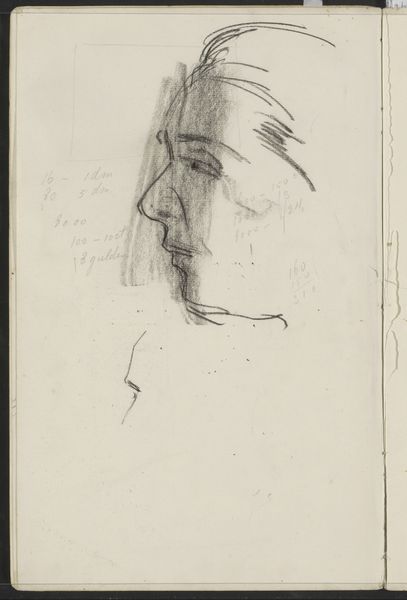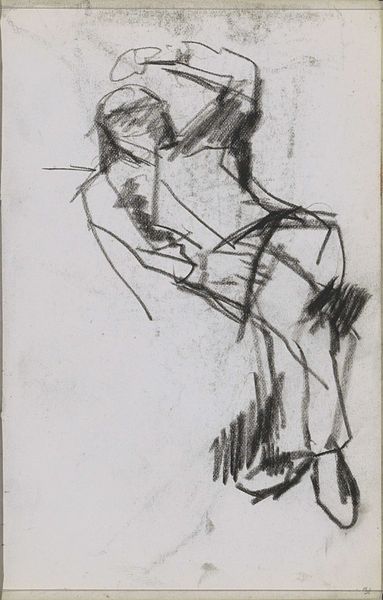![Weibliche Bildnisstudie (Female Portrait Study) [p. 5] by Max Beckmann](/_next/image?url=https%3A%2F%2Fd2w8kbdekdi1gv.cloudfront.net%2FeyJidWNrZXQiOiAiYXJ0ZXJhLWltYWdlcy1idWNrZXQiLCAia2V5IjogImFydHdvcmtzLzIxYTZjYjI4LTJmZmMtNDM1OS04ZTAxLTAzZTEzYjVkOTdlMC8yMWE2Y2IyOC0yZmZjLTQzNTktOGUwMS0wM2UxM2I1ZDk3ZTBfZnVsbC5qcGciLCAiZWRpdHMiOiB7InJlc2l6ZSI6IHsid2lkdGgiOiAxOTIwLCAiaGVpZ2h0IjogMTkyMCwgImZpdCI6ICJpbnNpZGUifX19&w=828&q=75)
drawing, pencil
#
portrait
#
drawing
#
ink drawing
#
pencil
#
expressionism
Dimensions: overall: 16.7 x 10.3 cm (6 9/16 x 4 1/16 in.)
Copyright: National Gallery of Art: CC0 1.0
Curator: This is Max Beckmann’s "Weibliche Bildnisstudie (Female Portrait Study) [p. 5]". We see it rendered primarily in pencil. What are your initial impressions? Editor: There’s a vulnerability to it, a quiet intensity. The closed eyes suggest introspection or perhaps even resignation. The swift, almost fragmented lines communicate both a sense of immediacy and a deep emotional undertow. Curator: It is indeed compelling in its stark simplicity. Considering Beckmann’s artistic trajectory, particularly his later association with the New Objectivity movement, it's fascinating to examine this work. He was concerned with art's ability to respond to a changing world. Editor: Absolutely, and looking at the position of this study within his larger body of work allows for analysis within prevailing societal gender dynamics. The figure's downturned gaze seems heavy with unshed emotion, suggesting constraints placed upon her as a woman in the society depicted through her expression. Curator: The Expressionistic touches—notice the broad strokes indicating the hair, in contrast to the more detailed linework around the nose and mouth—demonstrate a kind of selective emphasis. This might highlight certain qualities he associated with female subjectivity at the time. It shows up elsewhere. Editor: Definitely. Those areas become sites where traditional power structures play out in subtle but pervasive ways. Do we know who this sitter was? It is frustrating if we cannot attribute a voice, or identity to them beyond that they're a woman, being subjected to an expressionistic interpretation. Curator: The identity of the model remains unknown to us. Beckmann completed quite a few such studies, particularly earlier in his career, that served as preliminary sketches for larger works. These studies provide vital insight to his methodology of working. Editor: What intrigues me most is what the drawing doesn’t reveal, inviting viewers to fill in gaps with their own narratives. It provokes introspection on not only her identity but on the constraints put onto her by being a woman. Curator: That's insightful, inviting us to view art beyond representation but also with what it may tell us about representational strategies. I think you are right to find the potential this small work has to encourage discussion. Editor: Absolutely, this seemingly simple study challenges us to really confront and unravel larger conversations surrounding not only Beckmann but gender, identity and artistic methodologies.
Comments
No comments
Be the first to comment and join the conversation on the ultimate creative platform.
